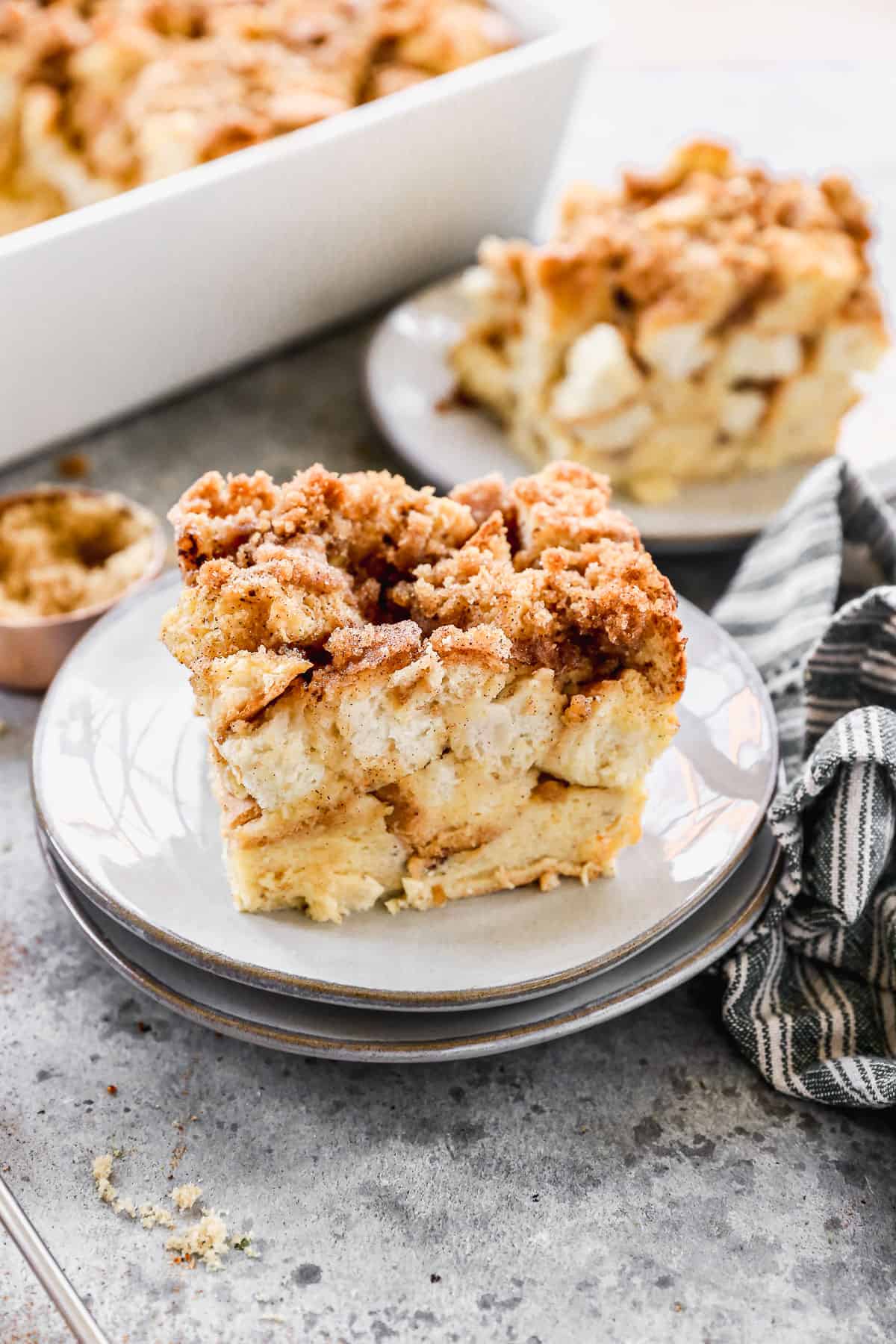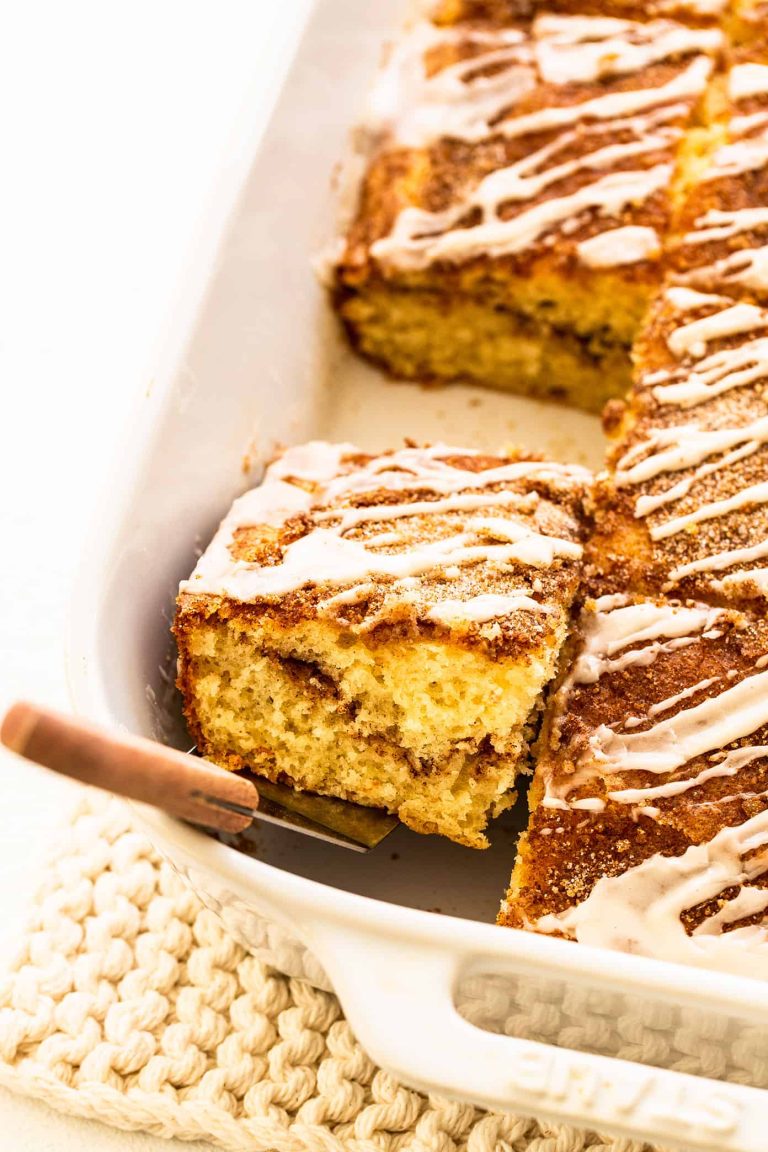Overnight French Toast Casserole Recipe
Overnight French Toast Casserole combines the rich flavors of traditional French toast with the convenience of a make-ahead dish. You prepare the casserole the night before by layering bread slices in a baking dish, then pouring a mixture of eggs, milk, and seasonings over the bread. Overnight, the bread absorbs the custard mixture, which gives it a delightfully creamy texture when baked in the morning. This method not only saves you time on busy mornings but also allows the flavors to meld beautifully.
Why It’s a Popular Breakfast Option
Busy mornings are less stressful with Overnight French Toast Casserole. Its preparation the night before means you can focus on other tasks or simply enjoy a relaxed morning. The casserole can also serve a crowd, making it ideal for weekend brunches or special occasions like holidays. With minimal effort, you get a flavorful and satisfying breakfast that pleases both kids and adults. The versatility of the recipe allows for various add-ins like fruits, nuts, or even chocolate, catering to different tastes and preferences.
Key Ingredients for Overnight French Toast Casserole
Bread Choices
Choosing the right bread impacts the texture and flavor of your casserole. Thick slices of challah, brioche, and French bread work well. These breads absorb the custard mixture without becoming too soggy. For best results, use day-old bread as it absorbs flavors better and maintains its structure when baking.
Custard Mixture Components
The custard mixture is crucial for creating a rich, creamy texture. Key components include eggs, milk, cream, sugar, and vanilla extract. Use whole milk and heavy cream to ensure a decadent consistency. For the perfect balance of sweetness, add brown sugar or maple syrup. Embrace a hint of warmth by including cinnamon and nutmeg.
Optional Enhancements: Nuts and Fruits
Enhance your casserole with additional textures and flavors by adding nuts and fruits. Chopped pecans or almonds offer a satisfying crunch. Fresh or dried fruits, such as berries, apples, and raisins, provide natural sweetness and added nutrition. Incorporate these ingredients into the casserole layers or sprinkle on top before baking for visual appeal.
Step-By-Step Guide to Making Overnight French Toast Casserole
Preparing the Bread
Choose day-old challah or brioche bread for optimal texture and flavor absorption. Slice the bread into 1-inch thick pieces, ensuring uniformity for even cooking. Arrange the slices into a greased 9×13-inch baking dish, overlapping slightly to maximize space.
Mixing the Custard
In a large bowl, whisk together 6 large eggs, 2 cups whole milk, 1 cup heavy cream, ½ cup granulated sugar, 1 tsp vanilla extract, and 1 tsp ground cinnamon. Ensure a smooth custard mixture to avoid lumps. Blend until well combined, integrating air for a fluffy texture post-baking.
Assembling the Casserole
Pour the custard mixture evenly over the arranged bread slices. Press down gently on the bread to help absorb the mixture. Sprinkle optional ingredients like chopped pecans, sliced almonds, or fresh berries between layers or on top for added texture and flavor.
The Overnight Soak
Cover the baking dish with aluminum foil or plastic wrap. Refrigerate the casserole overnight, allowing the bread to soak in the custard mixture. This results in a creamy, well-infused French toast. Remove the casserole from the refrigerator 30 minutes before baking to let it come to room temperature.
Cooking Techniques and Tips
Best Practices for Baking
Preheat your oven to 350°F (175°C) to ensure consistent baking. Place the casserole on the middle rack, giving it balanced heat distribution. Cover the casserole with aluminum foil for the first 30 minutes to trap moisture. This prevents the top from browning too quickly.
Remove the foil after 30 minutes to allow the top to crisp up. Check that the internal temperature reaches 165°F (74°C) using a kitchen thermometer. This ensures that the eggs are fully cooked and safe to eat.
If the casserole is browning too quickly, tent it with foil. Avoid over-baking, as this could make it dry.
How to Tell When It’s Perfectly Cooked
Check the edges and center. The edges should be set and the center slightly wobbly. Insert a toothpick in the middle; if it comes out clean or with a few moist crumbs, it’s done.
Pay attention to the color. A perfectly cooked French toast casserole will be golden brown on top. The custard should look firm and not runny.
Allow it to rest for 5-10 minutes before serving. This helps it set and makes slicing easier.
Serving Suggestions
Ideal Accompaniments
Pairing the Overnight French Toast Casserole with suitable accompaniments enhances the dining experience. Fresh fruits like berries, sliced bananas, and kiwi add a refreshing contrast. A dollop of whipped cream or a drizzle of maple syrup provides extra sweetness. Consider serving bacon or sausage on the side for a savory balance. A cup of freshly brewed coffee or a glass of orange juice complements the flavors well.
Tips for Presenting the Casserole
Ensure the casserole looks appealing by arranging it attractively before serving. Garnish the top with powdered sugar or a sprinkle of cinnamon. Serve the casserole in a decorative dish to make it visually inviting. Cut it into even portions for uniformity and ease of serving. Use fresh mint leaves or edible flowers as a finishing touch for a sophisticated presentation.
Conclusion
Creating an Overnight French Toast Casserole is a delightful way to elevate your breakfast game. With the right ingredients and a bit of preparation, you can offer a delicious and visually appealing dish that impresses everyone at the table. Whether you add nuts, fruits, or keep it classic, this casserole is sure to become a favorite. Enjoy the convenience of prepping it the night before and waking up to a ready-to-bake breakfast that’s both tasty and satisfying. Happy cooking!






